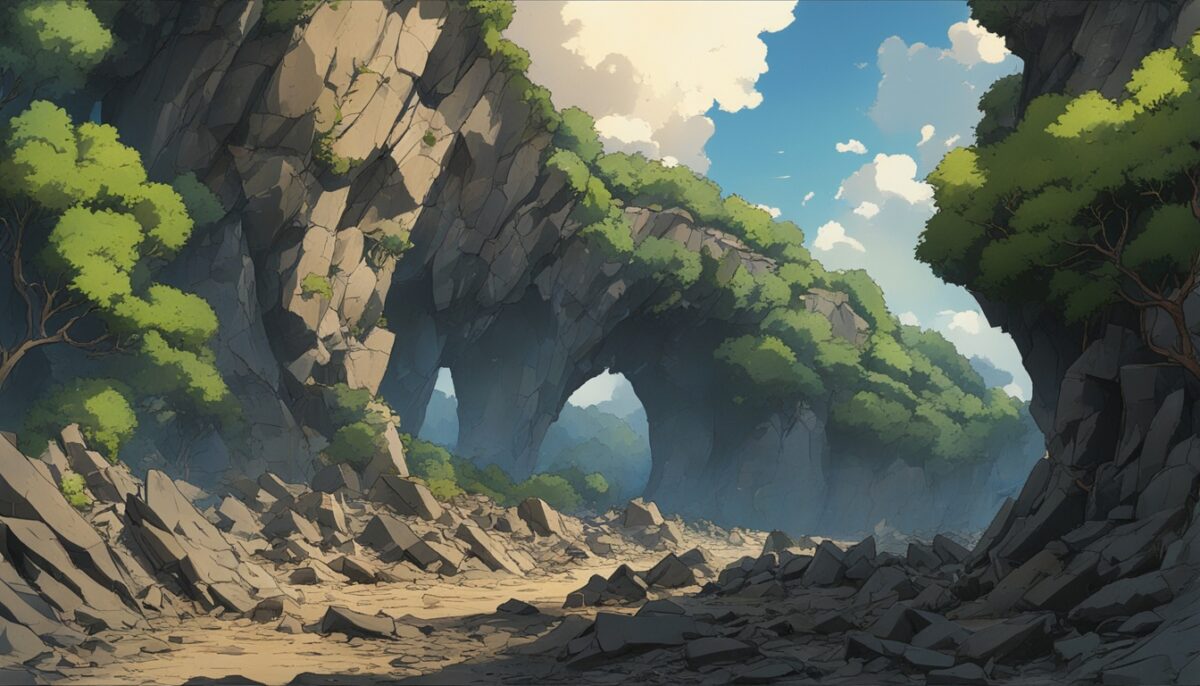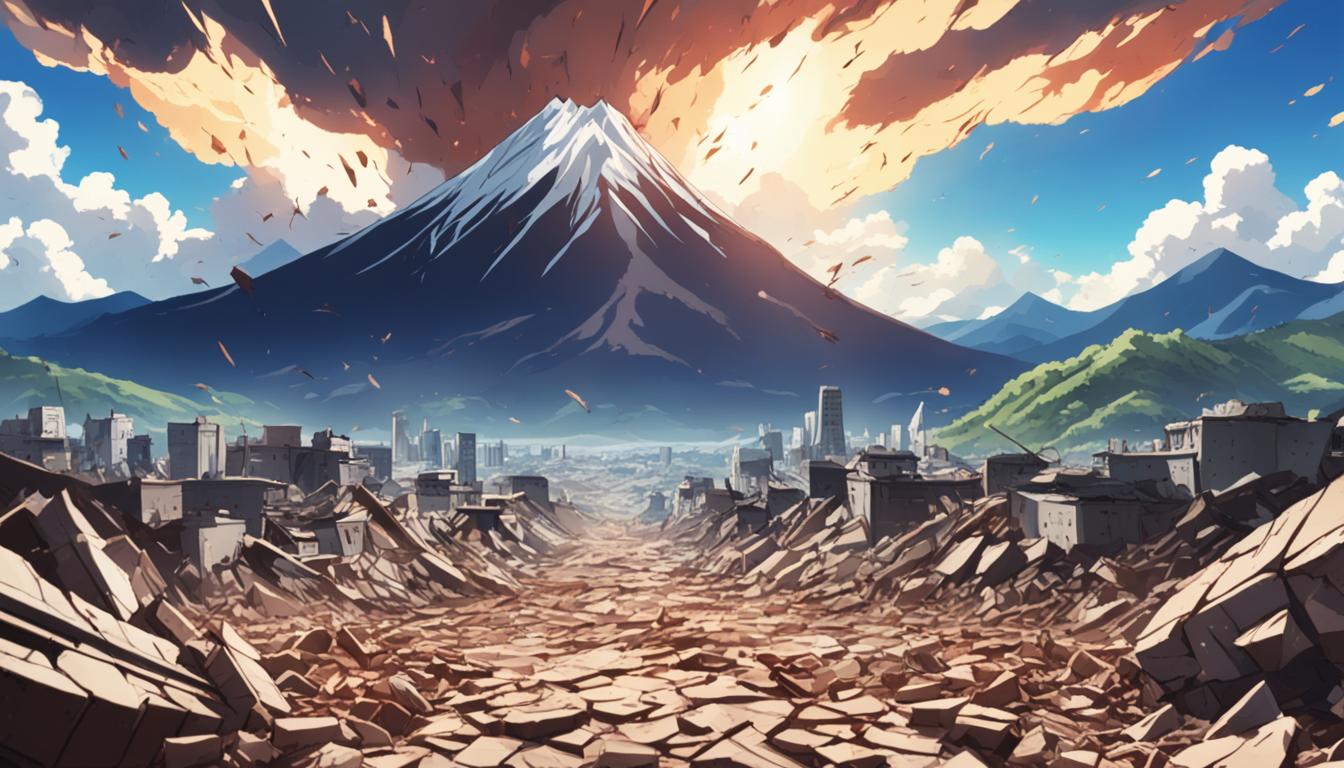Our planet is a dynamic and ever-evolving canvas, shaped by the powerful forces of nature. Among these remarkable forces, earthquakes stand out as some of the most awe-inspiring and transformative phenomena that have sculpted the landscapes we call home. As we delve into the fascinating world of earthquakes, we’ll uncover how these seismic events have left an indelible mark on the very ground beneath our feet.
Earthquakes are the result of the constant movement and collision of tectonic plates, the massive slabs of rock that make up the Earth’s crust. As these plates shift and grind against one another, they create dramatic changes in the landscape, shaping our planet in remarkable ways. From the towering peaks of mountain ranges to the deep valleys and fault lines that criss-cross the Earth’s surface, earthquakes have played a pivotal role in sculpting the world we inhabit.
As we explore the intricate relationship between earthquakes and our ever-changing landscape, we’ll delve into the causes and types of these seismic events, as well as the Richter scale, a crucial tool for measuring their magnitude and impact. By understanding the underlying forces that drive these natural phenomena, we can better appreciate the profound influence they wield over the very ground we stand upon.
The Immense Power of Tectonic Plate Movements
The Earth’s surface is a dynamic canvas, constantly shaped by the relentless movements of tectonic plates. These massive slabs of rock, floating atop the molten mantle, are the driving force behind the seismic activity that shapes our world. As these tectonic plates collide, drift apart, or slide past one another, they unleash an extraordinary amount of energy, resulting in the phenomenon we know as earthquakes.
Causes and Types of Earthquakes
Earthquakes occur when the built-up stress within the Earth’s crust is suddenly released, causing the ground to shake and tremble. The type of movement between the tectonic plates determines the nature of the earthquake. Convergent plate boundaries, where plates are colliding, can produce the most powerful quakes, while divergent boundaries, where plates are moving apart, often result in less intense but more frequent seismic activity.
Understanding the Richter Scale
The Richter scale, developed by American seismologist Charles Richter, is the most widely recognized method of measuring the magnitude of an earthquake. This logarithmic scale ranges from 1 to 10, with each increment representing a ten-fold increase in the amount of energy released. A magnitude 7.0 earthquake, for instance, releases 31 times more energy than a magnitude 6.0 quake. Understanding the Richter scale is crucial in predicting the potential impact of an earthquake and preparing for its aftermath.
“Earthquakes are not a random occurrence, but rather the direct result of the constant movement and interaction of the Earth’s tectonic plates. By understanding the causes and types of these seismic events, we can better prepare for and mitigate their impact on our lives and communities.”
How Earthquakes Shape our Landscape
Earthquakes are not just powerful natural disasters; they are also the driving forces behind the ever-evolving geography of our planet. The incredible forces unleashed by these seismic events have the ability to dramatically reshape the Earth’s surface, creating new mountains, valleys, and even shifting coastlines.
When tectonic plates collide or shift, the resulting earthquakes can cause the ground to rupture, forming new fault lines and altering the terrain. This process is particularly evident in regions like the Himalayas, where the ongoing collision of the Indian and Eurasian plates has led to the formation of some of the world’s highest mountain ranges.
But earthquakes don’t just create new landforms; they can also drastically modify existing ones. The 1906 San Francisco earthquake, for example, shifted the course of the Russian River, while the 1964 Alaska earthquake caused significant changes to the state’s coastline.
| Earthquake | Location | Landscape Changes |
|---|---|---|
| 1906 San Francisco Earthquake | California, USA | Shifted the course of the Russian River |
| 1964 Alaska Earthquake | Alaska, USA | Caused significant changes to the state’s coastline |
| Ongoing Himalayan Uplift | Asia | Formation of the world’s highest mountain ranges |
By studying the patterns and effects of these seismic events, we can gain valuable insights into the dynamic processes that have shaped the landscapes we see today. From the creation of new landforms to the modification of existing ones, earthquakes are a testament to the power of our planet’s tectonic forces.

“Earthquakes are not just powerful natural disasters; they are the architects of our ever-changing world.”
The Aftermath: Landforms Created by Earthquakes
Earthquakes are not just powerful seismic events – they can also shape the very landscape we inhabit. The aftermath of an earthquake often results in the formation of remarkable geological features that testify to the immense forces at play within our planet. From faults and folds to the towering mountains that punctuate the horizon, these landforms are a testament to the ongoing transformation of the Earth’s surface.
Faults, Folds, and Mountains
When tectonic plates collide or shift, the resulting movement can lead to the creation of faults – cracks or fractures in the earth’s crust. These faults can be vertical, horizontal, or even diagonal, and they often serve as the foundation for the formation of new landforms. As the plates continue to move, the compressive forces can cause the earth’s surface to fold, creating distinctive ridges and valleys that add to the diversity of our landscapes.
One of the most dramatic consequences of tectonic plate movement is the formation of mountains. The collision and uplift of these plates can push the earth’s crust upwards, creating towering peaks that can reach thousands of meters in height. These mountains not only capture our imagination but also play a vital role in shaping regional climates, influencing weather patterns, and providing valuable habitats for a wide array of flora and fauna.
| Landform | Description | Impact |
|---|---|---|
| Faults | Cracks or fractures in the earth’s crust caused by tectonic plate movement | Provide the foundation for the formation of new landforms |
| Folds | Ridges and valleys created by the compressive forces of tectonic plate movement | Contribute to the diversity and complexity of the landscape |
| Mountains | Towering peaks formed by the uplift of the earth’s crust due to tectonic plate collision | Influence regional climates, weather patterns, and provide habitats for diverse ecosystems |
By understanding the relationship between earthquakes and the creation of these remarkable landforms, we can gain a deeper appreciation for the dynamic and ever-changing nature of our planet. The study of geology and geography offers us a window into the powerful forces that have shaped the world we inhabit, inspiring us to explore and protect the incredible diversity of our natural landscapes.
Adapting to a Changing Landscape
As earthquakes continue to reshape our landscape, it’s crucial that we adapt and prepare for these dynamic changes. By understanding how earthquakes transform the geography of our planet, we can develop more resilient infrastructure and implement effective urban planning strategies to mitigate the impact of these natural disasters.
Our cities and communities must be designed with earthquake-resistant features, ensuring that our buildings, roads, and utilities can withstand the powerful tremors. Urban planners must also consider the long-term effects of earthquakes, such as the creation of new landforms and the alteration of existing ones. This knowledge will guide us in creating sustainable, adaptable communities that can thrive in the face of a constantly evolving landscape.
Additionally, we must strengthen our emergency response systems, equipping ourselves with the tools and expertise to swiftly address the aftermath of an earthquake. By fostering a culture of preparedness and resilience, we can minimize the disruption to our lives and protect the communities we cherish. Together, we can navigate the challenges posed by earthquakes and shape a future where we live in harmony with the ever-changing geography of our world.

